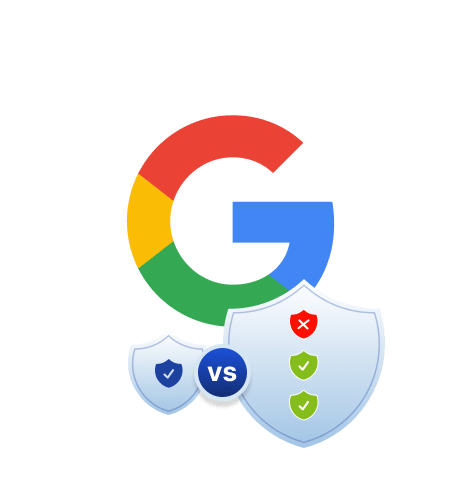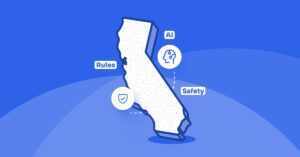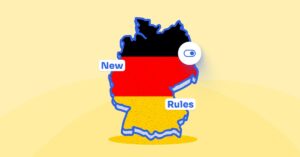Introduction
Google Consent Mode v2 offers website owners two distinct versions: basic and advanced, each designed to address different needs and preferences in managing user consent and data collection. Basic consent mode emphasizes simplicity and compliance by activating Google tags only after users interact with a consent banner, aligning with privacy principles and user consent. On the other hand, advanced consent mode introduces a more nuanced approach, allowing data collection from both consented and non-consented users to gather vital modeling data for advertising purposes.
This article explores the fundamental differences between basic and advanced versions of Google Consent Mode v2. We delve into how each version operates, its impact on user experience, data collection practices, and compliance with privacy regulations. By understanding the distinctions between these versions, website owners can make informed decisions about implementing the most suitable consent management strategy for their needs.
Understanding Basic Consent Mode
Basic consent mode embodies simplicity and compliance by ensuring that Google tags remain dormant until users interact with a consent banner. This user-driven approach aligns with principles of privacy and consent, allowing users to dictate the collection of their data for analytics and advertising purposes. By implementing basic consent mode, website owners can easily navigate the complexities of consent management, ensuring compliance with regulations such as the Digital Markets Act.
In this mode, Google Consent Mode v2 operates on a binary system where data collection is contingent upon explicit user consent. Once a user grants consent by accepting cookies or interacting with the consent banner, Google Tags load, enabling the collection of valuable analytics data and facilitating personalized advertising efforts. This ensures transparency and empowers users to make informed decisions regarding their privacy preferences while enabling website owners to leverage data for enhanced conversions.
Exploring Advanced Consent Mode
Contrary to its basic counterpart, the advanced consent mode introduces a layer of complexity by allowing data collection from both consented and non-consented users through consent mode modeling. This process utilizes observable data and historical trends to quantify the relationship between consented and unconsented users, enabling website owners to gather vital modeling data for advertising purposes, even from users who deny consent. This nuanced approach necessitates a deeper understanding of consent management and technical expertise for implementation.
In the advanced mode, website owners can configure consent parameters to specify which Google services receive data, providing granular control over consent management. Consent signals are used to manage data collection and user privacy by sending the consent states to Google’s services, allowing for tailored advertising strategies while mitigating risks associated with non-compliance. However, it also raises ethical considerations regarding user privacy and data usage, necessitating careful deliberation by website owners.
Contrasting basic and advanced versions

Implementation complexity
One of the primary distinctions between the basic and advanced versions of Google Consent Mode v2 lies in their implementation complexity. Basic consent mode offers a straightforward approach, where Google Tags load only after user interaction with the consent banner. In contrast, the advanced mode requires more technical expertise and resources, as it involves configuring multiple parameters for data collection from both consented and non-consented users.
Flexibility in data collection
While basic consent mode adheres strictly to user consent preferences, advanced mode provides more flexibility in data collection. In basic mode, data collection is contingent upon explicit user consent, ensuring compliance with privacy regulations. Conversely, the advanced mode allows for data collection from non-consented users, albeit with certain limitations, facilitating more comprehensive modeling and analysis.
Granularity of consent settings
The basic consent mode offers simplicity in consent management, where user interactions with the consent banner dictate data collection behavior. Conversely, advanced consent mode allows website owners to configure consent parameters and specify which Google services receive data, allowing for more nuanced consent settings. This granularity enables website owners to tailor their consent management strategies according to their specific needs and regulatory requirements. Implementing a consent management platform can provide the necessary tools to achieve this level of granularity in consent settings, facilitating the management of user consents, configuring cookie banners, and ensuring compliance with user privacy regulations through integration with Google Tag Manager.
Compliance with privacy regulations
Both basic and advanced versions of Google Consent Mode v2 aim to ensure compliance with privacy regulations, such as the Digital Markets Act and GDPR. However, the advanced mode introduces complexities regarding data collection from non-consented users, requiring careful consideration of legal and ethical implications. On the other hand, the basic mode offers a straightforward approach to compliance by strictly adhering to user consent preferences.
The Digital Markets Act
The Digital Markets Act (DMA) is a significant piece of legislation introduced by the European Union to regulate the power of major digital platforms, often referred to as gatekeepers, in the digital economy. It aims to ensure fair competition, promote innovation, and safeguard consumers’ interests in digital markets. The DMA establishes criteria to identify and categorize large online platforms as gatekeepers and imposes specific obligations on these platforms to prevent unfair practices.
The act addresses concerns about the dominance of certain digital platforms. It aims to foster a more competitive landscape by increasing transparency, ensuring access to essential services and data, and prohibiting unfair practices such as self-preferencing and leveraging market power. By imposing obligations on gatekeepers, the DMA seeks to promote a level playing field for businesses operating within the EU digital market.
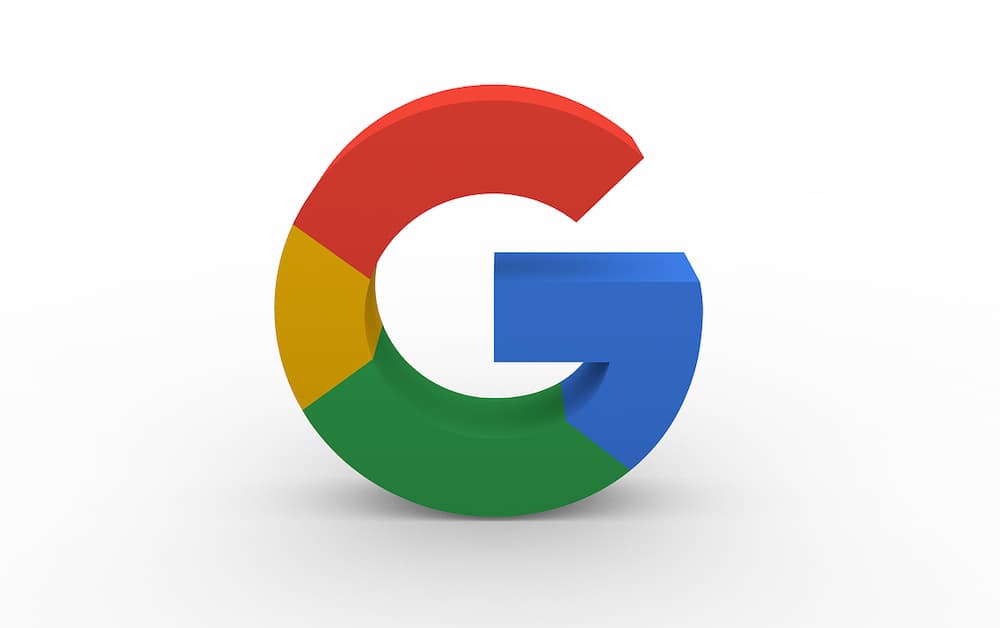
Leveraging Google Tag Manager
Google Tag Manager (GTM) is a powerful tool that website owners can use to simplify the implementation of Consent Mode v2. Also, it simplifies the process of managing and deploying tags on websites and mobile apps. It allows users to add and update various tracking codes, such as those for Google Analytics and Google Ads, without requiring extensive coding or app releases. GTM provides a centralized platform for marketers, analysts, and developers to manage tags efficiently, enhancing website tracking and optimization efforts. With GTM, users can deploy and edit tags from a web interface, making tag management seamless and enabling quick adjustments to track configurations. Additionally, Google Tag Manager offers features like version control, debugging tools, and tag templates, further streamlining the tag management process. Successfully implemented consent mode through GTM allows for precise control over tag firing based on user consent, highlighting the importance of correct setup and verification.
Impact on personalized advertising
Advanced Consent Mode is a feature that allows online advertisers to deliver personalized ads to users while respecting their privacy preferences. This feature enables websites to collect and share user data with advertisers only if users have given their explicit consent. By doing so, users can receive more relevant ads that match their interests while maintaining control over their personal information. The mode is designed to comply with data protection laws and industry standards, ensuring users’ privacy is always respected. With Advanced Consent Mode, online advertising becomes more effective, relevant, and user-friendly.
Addressing user interactions
Consent Mode v2 is an updated version of the Consent Mode feature, which uses a dynamic approach to determine the consent status of users based on their interactions with consent banners. This feature ensures that data collection on a website aligns with the users’ preferences throughout the course of their visit. By analyzing user behavior on the site, Consent Mode v2 can provide more personalized and granular consent options, resulting in a better user experience and greater transparency in data collection. This approach also helps website owners to comply with privacy regulations and improve their overall data governance practices.

Enhancing conversion modeling
Consent Mode v2 offers an advanced mode that has revolutionized conversion modeling capabilities. By leveraging data from both consented and non-consented users, this mode provides marketers with more accurate insights that can be used to optimize their marketing campaigns. The advanced mode of Consent Mode v2 is particularly useful for providing a more comprehensive view of your website traffic, especially when making data-driven decisions that require understanding your entire audience, regardless of their consent status. With this mode, you can better understand your website visitors and make more informed decisions to help you achieve your marketing goals.
Why Google Consent Mode v2 is crucial for Shopify stores?
Google Consent Mode v2 is essential for Shopify stores to ensure compliance with privacy regulations while maximizing marketing effectiveness. Both basic and advanced versions offer significant benefits:
Compliance: Google Consent Mode v2 helps stores comply with privacy regulations like GDPR and CCPA by managing user consent for data collection.
User experience: It enhances the user experience by allowing tags to fire only after user consent, ensuring transparency and respect for user preferences.
Data collection: Both versions enable data collection even when users deny consent, ensuring valuable insights for marketing strategies.
Marketing optimization: Stores can optimize marketing efforts and improve conversion tracking by collecting consent status and adjusting tag behavior accordingly.
Both versions cater to different needs: the basic mode prioritizes user privacy, while the advanced mode allows tag execution without explicit user consent, potentially improving data collection for marketing purposes. Shopify stores should implement Google Consent Mode v2 to balance compliance with privacy regulations and effective marketing strategies.
Impact on advertising and analytics on Shopify stores
Consent Mode v2 is a privacy-focused solution that significantly impacts how advertising and analytics activities are carried out in Shopify stores. It is designed to adjust data collection based on a user’s consent status and consent preferences, ensuring that Shopify store owners respect user privacy while maximizing the value of collected data. Essentially, it allows store owners to collect data from users who have given their consent to data collection while limiting data collection from users who have not given their consent. This helps Shopify store owners to comply with data privacy regulations and build trust with their users. Overall, Consent Mode v2 is a critical tool for Shopify store owners who want to balance data collection with user privacy and maintain a helpful, fair, and safe online environment for everyone.
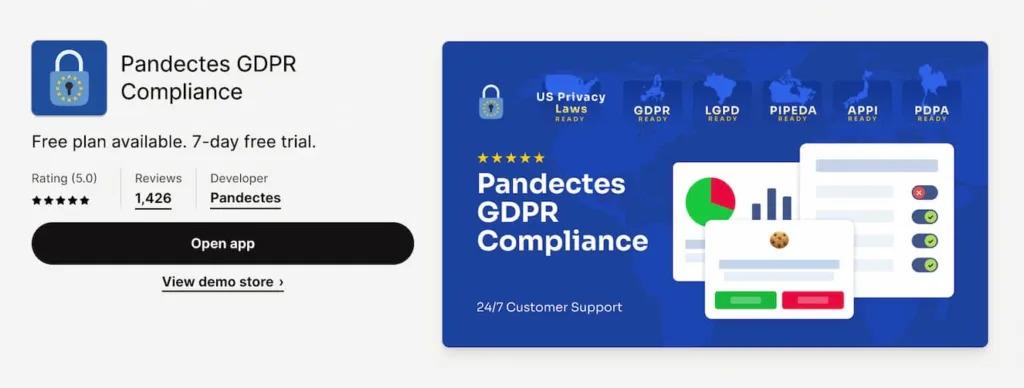
Implementing Google Consent Mode v2 with Pandectes
When implementing Google Consent Mode v2, Shopify store owners may encounter challenges such as users declining to give their consent and the risk of missing important data. It is necessary to find effective solutions to address these issues. Understanding and configuring ‘default consent’ is crucial for Shopify store owners when setting up Google Consent Mode v2 to ensure that they accurately reflect user consent preferences. One strategy is to have a well-designed consent banner with clear communication to users. Educating users about the benefits of providing consent is also crucial, fostering transparency and trust.
The Pandectes GDPR Compliance app is an excellent solution for consent management among the various platforms available for Shopify stores. It offers a comprehensive approach to GDPR compliance, providing store owners with the necessary tools to navigate the complexities of user consent. By using Pandectes, store owners can improve their implementation of Google Consent Mode v2 and ensure a user-friendly and legally compliant online environment. There are many consent management platforms available, but Pandectes stands out due to its implementation of Shopify’s specific requirements, making it easy to comply with GDPR and Google services without coding. Finally, the app helps store owners manage user consent effectively.
Conclusion
Google Consent Mode v2 is a powerful tool that offers website owners flexible options for managing user consent and data collection activities. With this tool, website owners can optimize their advertising and analytics efforts while ensuring compliance with regulations and respecting user privacy preferences.
The basic version of Google Consent Mode v2 allows website owners to capture user consent for advertising and analytics data collection activities. This version is easy to implement and provides a simple and straightforward way to manage user consent preferences.
The advanced version of Google Consent Mode v2 offers more granular control over data collection activities. With this version, website owners can customize the user consent flow for each individual data collection activity, such as remarketing, conversion tracking, and more. This version also allows website owners to enable the Global Site Tag (gtag.js) for all data collection activities, ensuring that all data is collected and processed in compliance with user consent preferences.
Overall, Google Consent Mode v2 is an excellent tool for website owners who want to optimize their advertising and analytics efforts while ensuring compliance with regulations and respecting user privacy preferences. Whether implementing the basic or advanced version, website owners can rest assured that they provide their users with a transparent and user-friendly consent experience.

